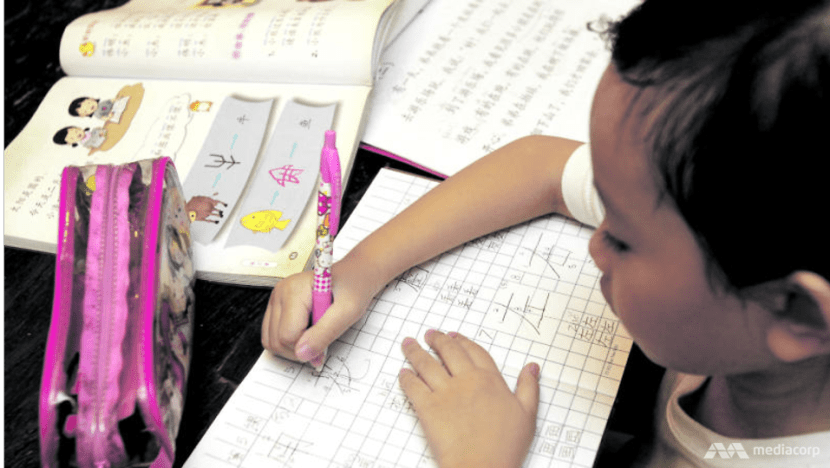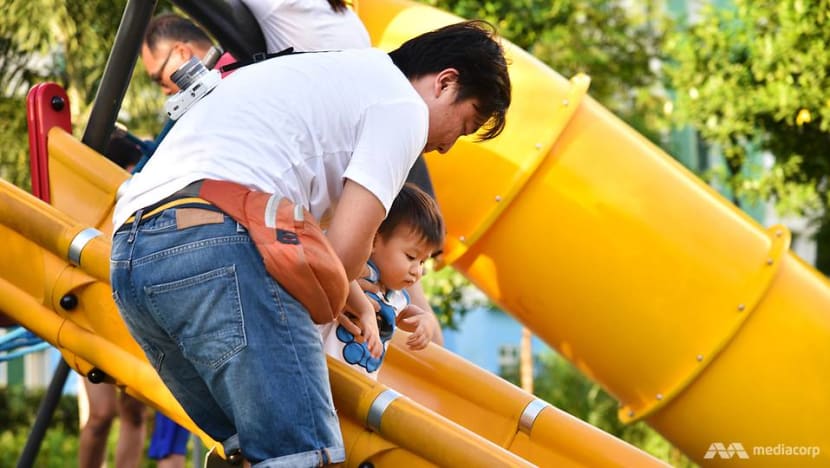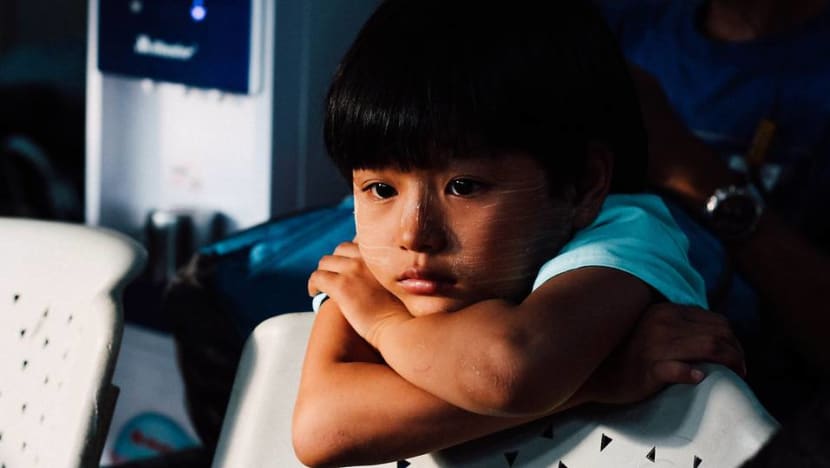commentary Commentary
Commentary: Does caning still have a place in modern-day parenting?
We live in an era where the cane and other authoritarian methods of discipline have been called into question, says mum June Yong.

A child in pre-school. (File photo: TODAY)
SINGAPORE: The recent news of the father who was jailed because of the excessively harsh disciplinary measures he meted out on his son caused quite an uproar.
We live in an era where the cane and other authoritarian methods of discipline have come into question and the scales have tipped towards “softer” and more positive parenting approaches.
It is hard to imagine that just three decades ago disciplinary tactics such as repeated caning on the legs, locking the child up in a room, or sending them to bed hungry raised nary an eyebrow.
When I was in primary school, I recall being whacked across the palm with a wooden ruler as well as being smacked on the head with a book by one of my teachers. Today, such tactics would surely draw the ire of parents and instead of the student being marched into the principal’s office, it would likely be the teacher.
What has caused such a sea-change in our attitudes towards discipline?
THE HEART OF DISCIPLINE IS LOVE
First things first – what is the heart of discipline? Why do we do the at-times unpleasant thing of taking our children to task?
We discipline because we want to teach the child to discern right from wrong, and to choose right over wrong. It is done with the end goal in mind: That they will grow to become mature, responsible adults.
READ: Raising a teenager is just like caring for a bonsai, a commentary
Very often, the focus is on correcting behaviour, but what is actually happening in effective discipline is we are helping the child develop an inner conscience – the little voice in us that warns us when we are about to do something inappropriate.

Harsh, authoritarian methods like caning have given way to softer, more up-to-date tactics like time-outs, time-ins, withdrawal of privileges, and natural consequences.
What do I mean by natural consequences? Well, for example, if junior tried to stay up late playing games on his phone under a blanket, a natural or associated consequence would be a new household policy to surrender his phone by 9pm every night.
READ: When should children be allowed to have their own mobile phones? A commentary
If little brother pulled his sister’s hair out of ill intent, you could give him two strokes of the rotan and teach him not to do it next time, or you could get him to apologise and do something nice for his sibling to redeem himself.
Which method is the better teacher?
I think the answer depends on which camp you’re in, as well as the temperament of your child. Some children learn better the soft way, and do not generally require any harsh disciplinary action at all. (I can attest to this with my experience with one easy-going child of my own.)
Also, are you able to mete out corporal punishment in a way that is driven by love and reason instead of anger? This is a very hard balance to reach.

There is no one-size-fits-all method, but we need to remember that discipline and love are both sides of the same coin.
Many people associate the word “discipline” with punishment (perhaps because of how we were brought up ourselves) but it is in fact about helping the child to develop and grow.
TO CANE OR NOT TO CANE
Apart from the child’s temperament, it also depends on the context.
The cane (and other corporal punishment) should be reserved for certain “crimes”, such as outward rebellion or serious offences like repeated lying, hitting, or stealing.
If you do choose to use it, bear in mind that its efficacy reduces with age; studies show that corporal punishment loses its effectiveness after the age of ten.
How you use the cane matters. In your hand, it can become a tool or a weapon.
We should never reach for the cane when in rage as this can lead one to overdo it and enter into the territory of abuse.
When combined with a clear explanation of the reason and loving restoration afterwards (like a hug or word of reassurance), caning can still be an effective tool for some parents to teach obedience and respect for authority for some youngsters.

In this arena, less is more. So choose your battles carefully.
Different children react differently to harsh methods. Some may learn quickly to avoid the pain; for others, it may not result in progress but instead stir up anger and resentment and push the child further away from the parent – which is the opposite of what you want to achieve.
One area where parents should think twice about meting out corporal punishment is in academics and schoolwork. The reason behind this is when the child fails to meet up to their parents’ expectations, they are already bearing the consequence – the bad grade and the feelings of disappointment.
READ: Life Beyond Grades a worthy cause but be careful not to trivialise failure, a commentary
However, if junior is exhibiting a laissez-faire attitude towards his poor grades, try to understand his struggles and think of ways to motivate and support him.

ARE WE GOING SOFT?
Many parents today lean towards gentler, more respectful forms of discipline and teaching. Contrary to what some might think, this isn’t taking the easy way out.
Coming down to the level of the child, controlling one’s anger or frustration, and employing logic and reason to state your case and influence your child requires time and patience.
Gentler also doesn’t mean we swing to the other end of the spectrum, and allow our kids to get away with murder.
READ: So your child wants to be a YouTube star? A commentary
Children need to learn that every behaviour carries consequences.
In his book The New Strong-willed Child, James Dobson wrote: "Parents must be willing to let children experience a reasonable amount of pain when they behave irresponsibly."
Parents also need to be mindful that not every crime requires maximum punishment.
If your child helps with the dishes, he'll likely get extra hugs at bedtime.
If he mocks his sibling for losing at a game, he may get a scolding and his play-time cut short.
If he steals a toy from the departmental store, he may get two swats on his behind and have to own up to the store manager.

A FIRM BUT LOVING HAND
When we yell at our children or spank them out of anger, we often suffer guilt afterwards.
Let that guilt be a signal for us to slow down and reflect on our approaches.
There are more reasonable ways to teach obedience and good conduct. These include logical consequences as mentioned above, and positive reinforcement – when we catch the child demonstrating obedience and pro-social behaviour, and affirm them in a timely way.
Let’s not let our anger get the better of us. Just as our children are learning daily, we adults can take steps toward positive change.
If we want our children to flourish under our care, adopt a firm but loving hand. It is the best way to support their development while safeguarding the parent-child relationship
June Yong is a mother of three, an educational therapist and owner of Mama Wear Papa Shirt, a blog that discusses parenting and education in Singapore.














